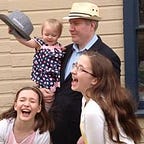Eyes Wide Shut: Kubrick’s Great Mystery, Part II
Last time I covered the movie Eyes Wide Shut, implying that I knew of a cipher key. That is true. There’s a ton of ground to cover here, but let’s start with the dessert first.
Kubrick timed all the scenes carefully. That’s what the dozens of takes was for, so he could select a scene that was the absolute correct length, without anyone in the process understanding what he was up to. As far as they were concerned, Kubrick was just a demanding director. Yet the acting in the movie is, well, terrible. That adds to the surreal nature of the film, sure, but it also ensures there are cuts of the exact length, with the blocking of the characters in the right place. The movie is then scripted with events mirroring each other. In the first half, we begin with a part and “set everything up.” (The relationships begin). The second half begins with another party and breaks everything down. (The relationships end).
By watching two films simultaneously, with a second movie starting advanced, you can tell different stories. One movie could be what is apparently happening, and the other what is happening in subconscious mind; perhaps it is actors internal voice we hear. Put the slider at a different place, and you see a different story, which I believe is the director speaking through the movie to us.
I’m convinced this is not just Apophenia (Seeing patterns that was not there). Kubrick set up events in the movie to be mirrors and was known for this; the movie has a mirror theme. The main…
